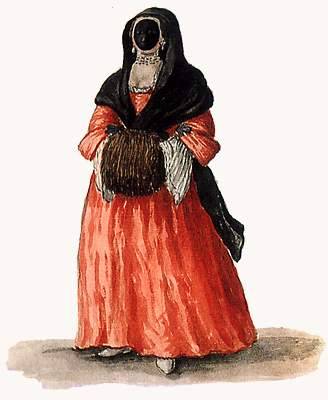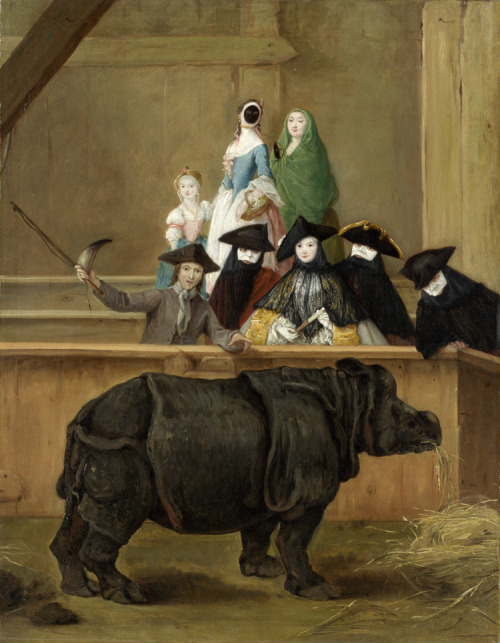sartorialadventure:Venetian masks: The Moretta mask.Moretta means “dark”. Also called the Muta, this
sartorialadventure:Venetian masks: The Moretta mask.Moretta means “dark”. Also called the Muta, this mask was held in place, not with strings, but with a button attached to the inside, which the wearer held between her teeth. This might keep her mute (thus the name muta). It was often worn with a long taffeta cloth, the xendal, which was originally used by ladies to cover their head and shoulders. This mask–and thus its wearer–was considered mysterious and intriguing, and was only worn by women, but could be worn by women of any class. It was invented in France (where it was called the visard and was used to protect women’s skin from the sun) and rapidly became popular in Venice: though it looks pretty creepy to us today, its simple shape was considered at the time to bring out the beauty of feminine features. It was often worn by women visiting convents.I have seen a lot said about how the use of the moretta was an instance of the oppression of women, since they couldn’t speak with it on. However, as long as one kept one’s teeth shut, one could certainly have spoken while wearing the mask. In fact, in the novel Betsy Thoughtless by Eliza Haywood (1751), a young Englishwoman is depicted as meeting a gentleman while masked, and having quite a bit of conversation with him. After her mask is removed, Haywood writes, What conversation after this passed between them, I shall leave to the reader’s imagination, and only say, that the voice of the Incognita [unknown woman] being more distinguishable by the button of her mask being removed, Mr. Trueworth could not help thinking, he had heard before accents very like those with which he was new entertained.So clearly this woman could and did speak while wearing a button-mask of some sort, although it distorted her pronunciation. It’s possible that the Moretta made it more difficult to be heard since, unlike the visard, there was no mouth hole. Venetian masks actually enhanced the freedom of all citizens of Venice by allowing them greater license: if you wore a mask in public, no one knew who you were. This was particularly important for women, whose reputations were more delicate than men’s. Women in masks could, like the woman in Betsy Thoughtless, carry on dalliances and join in other activities they would not feel free to participate in if their identities were obvious. Thus Venetian women were not kept cooped up in the house and participated more freely in public than upper-class women in other western European countries. -- source link


